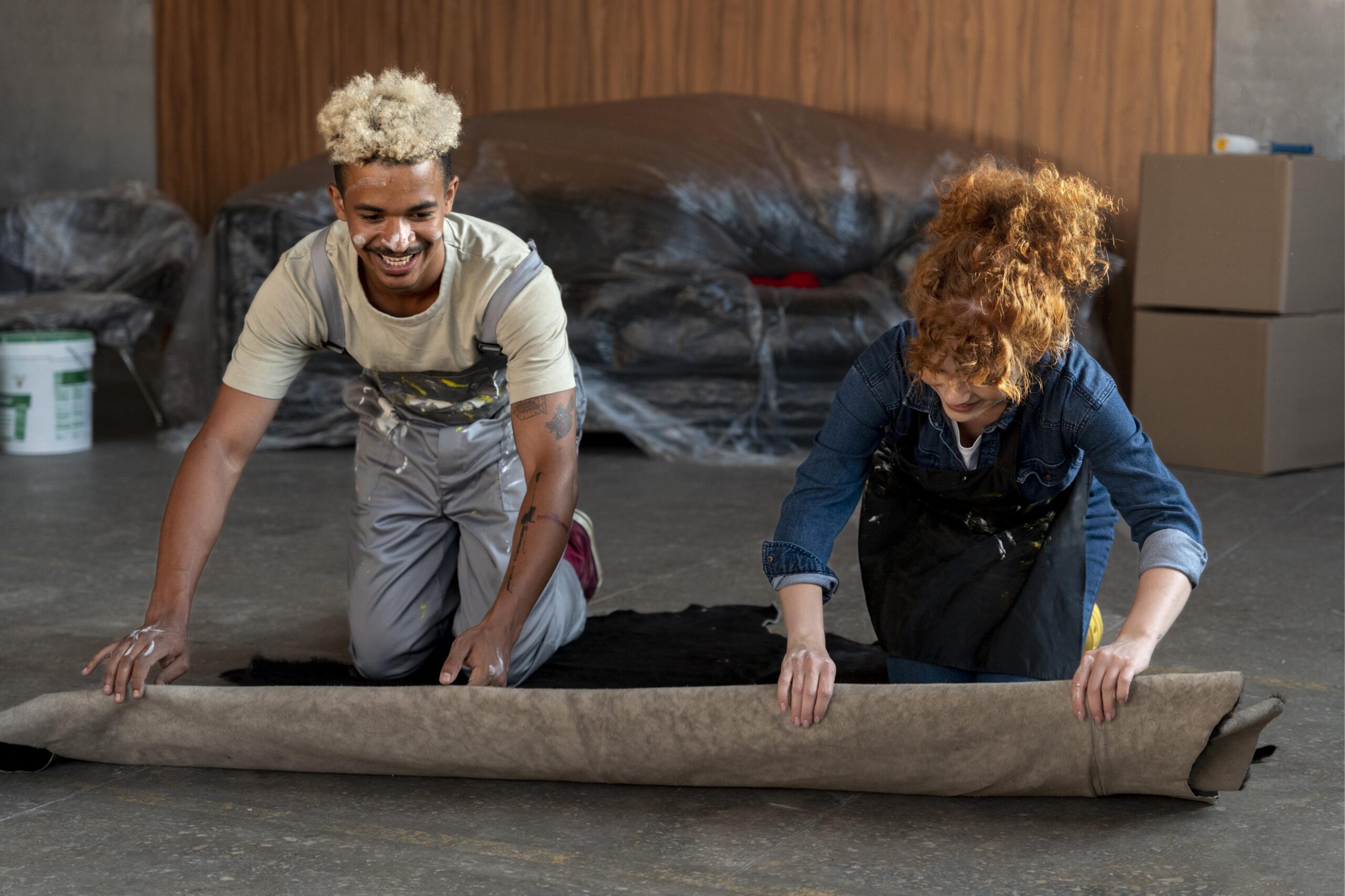Carpet padding, also known as carpet underlay or carpet cushion, is an important component in any carpet installation. Choosing the right type of carpet padding can make a big difference in how your carpet looks, feels, and performs over time. Here is an overview of the most common types of carpet padding and their key pros and cons.
Felt Carpet Padding
Felt has been used as carpet padding for decades. Here are the main pros and cons:
Pros
- Inexpensive option
- Fairly firm and supportive
- Can last 10-15 years under ideal conditions
Cons
- Tends to flatten out over time
- Not as dense or cushy as other padding options
- Can shift and buckle if gets wet
- Not environmentally friendly
Rubber Carpet Padding
Rubber carpet padding is known for its high density and durability. The pros and cons include:
Pros
- Long lifespan of 15-20 years
- Excellent durability and resistance to oils and liquids
- Firm support that doesn’t break down easily
- Recycled rubber is an eco-friendly option
Cons
- On the expensive side
- Heavy and difficult to install
- Not as plush feeling underfoot
Polyurethane Foam Padding
Polyurethane foam has become a popular carpet padding choice. Here are some of its key pros and cons:
Pros
- Soft, cushy feel underfoot
- Available in various thicknesses and densities
- Relatively affordable compared to other pad options
- Also comes in eco-friendly soy-based foam
Cons
- Can break down or flatten within 5-10 years
- Not very resistant to moisture and spills
- Needs frequent carpet cleaning to maintain cushion
- Some formulations off-gas VOCs initially
Rebond Carpet Padding
Rebond padding is made from recycled scrap foam and fibers. Here is an overview of its pros and cons:
Pros
- Extremely eco-friendly and sustainable
- Cushy support at an affordable price
- Consistent thickness across the pad
Cons
- Durability is questionable long-term
- May compress or flatten after a few years
- Can shift or bunch up under the carpet
Waffle Rubber Padding
Waffle rubber padding gets its name from the waffle-like texture pressed into the rubber. Here are some key pros and cons:
Pros
- Highly durable with 20+ year lifespan
- Excellent moisture barrier due to rubber
- Adds firm, resilient support and structure
Cons
- One of the more expensive padding options
- Difficult for DIY installation
- Not quite as plush as other padding types
How to Find the Best Carpet Underlay Option?
With so many types of carpet padding on the market, it can be tricky to determine which is right for your home and needs. Here are some tips on selecting the best carpet pad option:
Assess Your Needs
First, analyze the needs of the specific room or area getting carpeted. Is plush softness underfoot most important? Or are you seeking firm support and longevity? Prioritize what features matter most – cushioning comfort, durability, sound insulation, moisture resistance, etc.
Match Your Carpet Type
Choose a carpet pad that works well with the specific carpet type being installed. The density and thickness of both carpet and pad should be compatible. Some carpets require a firmer or thicker pad while others call for a softer pad.
Consider Your Budget
Carpet padding ranges widely in price from budget-friendly options like basic felt to premium pads like dense rubber. Set a reasonable budget and find padding options in your range that still meet performance needs. Cheaper pads may not last as long.
Check Pad Thickness
The general rule is a pad thickness between 3/8″ to 1/2″ for residential carpets and 1/2″ to 7/16” for commercial-grade carpets. Too thin provides inadequate cushioning while too thick can cause installation issues.
Read Performance Ratings
Look at independent laboratory ratings for factors like density, resistance to moisture, and compression ratings. Top-rated pads undergo extensive performance testing. Higher numbers indicate better performance.
Talk to Flooring Experts
Consult experienced flooring sales associates at carpet retailers near you. They can guide you in finding the right padding to perfectly complement the carpet you selected. Describe your lifestyle, goals and the areas getting carpeted to get personalized advice.
Following these handy tips will make selecting an exceptional carpet pad much easier! Do some homework to find the perfect match. The right pad makes all the difference in carpet that looks fantastic for years.
Final Words
When selecting carpet padding, factors like cost, comfort, eco-friendliness, noise insulation, durability and ease of installation should all weigh into your decision. Prioritize the features that are most important for your home and lifestyle needs. Rubber and high-density foam provide the longest-lasting support, while thick rebound padding offers cushy softness for the duration it lasts. With proper care and maintenance, the right carpet pad can extend the life your carpet and provide better performance.

